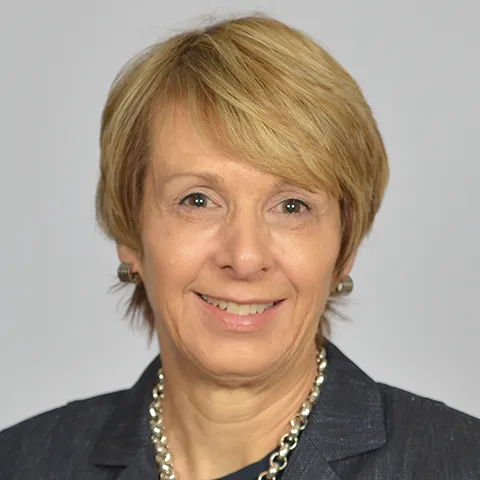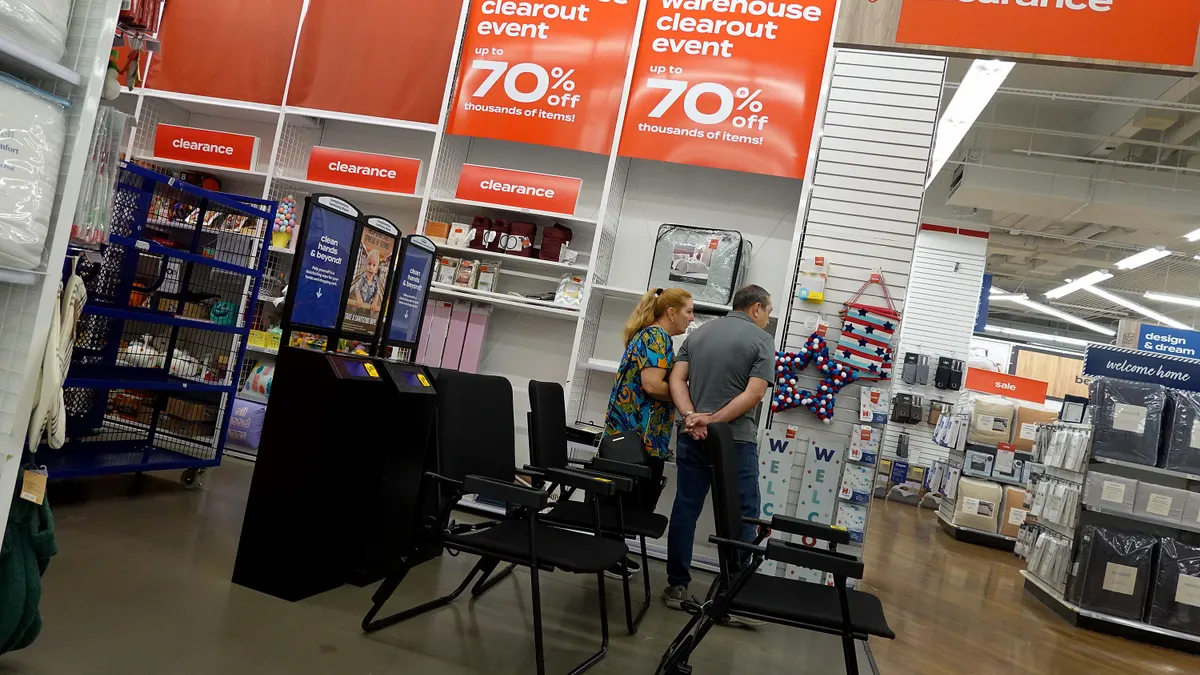On an April Saturday — one day before Bed Bath & Beyond made the much-anticipated move to file for bankruptcy protection — the storied home-goods retailer promoted its interim CFO Holly Etlin to the dual role of CFO and chief restructuring officer.
Since then, Etlin said she has been putting in 12-hour days working mostly out of the company’s Union, New Jersey, headquarters, acting as CRO in what she sees as a kind of “uber CFO” position, and presiding with her own team over the messy process of winding down the home-goods retailer.
“A typical CRO mandate is very broad,” Etlin told sister publication CFO Dive. “You are overseeing the efforts of the entire management team to turn the business around.” In the case of businesses that end up liquidating, the CRO is integral to the whole restructuring of the business and the negotiations with the lenders, she said.

In a July 19 interview with CFO Dive, Etlin reflected on her role, some steps CFOs of troubled companies can take to keep their enterprises afloat as well as on the progress of the closely watched Bed Bath & Beyond bankruptcy process to date.
Fast retail cases
“Retail bankruptcy cases, by necessity under certain provisions in the law associated with the leases, have to move very very quickly and so typically retail cases are wrapped up within six months or less,” Etlin told CFO Dive, speaking from an airport while waiting for a flight. “We are anticipating being complete with our in-court process by the end of September.”
During her tenure at Bed Bath & Beyond, Etlin — who remains a full-time employee at the consultancy firm AlixPartners where she is a partner and managing director — witnessed a big shift in the company’s direction.
Up until roughly two weeks before the bankruptcy filing, the company “continuously was working with its lender and others in an attempt to secure sufficient liquidity to continue as a going concern.” When those efforts failed, the company filed for Chapter 11 protection, saying it had a commitment for $240 million in debtor-in-possession loans and $1.8 billion in long-term debt.
Etlin, who penned a full-throated court filing outlining the company’s history which cited its reluctance to compete in the e-commerce space as one of its shortcomings, said in the interview that the company’s goals after bankruptcy turned to maximizing value for lenders and creditors, liquidating the stores and selling off intellectual property and other assets such as real estate leases for the stores.
This month, Etlin said she expects to complete the liquidation sales and finish closing the doors of hundreds of the company’s once ubiquitous stores. Last month, online-only retailer Overstock.com at auction agreed to pay $21.5 million for the company’s intellectual property, such as internet properties, social media, mobile platforms and trademarks.
Parachuting in
Few people in the tough turnaround industry were likely surprised by the firm’s choice of Etlin for the job. Etlin is “extremely well known and well respected in the restructuring industry and AlixPartners is one of the largest if not the largest restructuring firms in the world,” said Christopher Ward, president-elect of the American Bankruptcy Institute and chair of the Polsinelli law firm’s bankruptcy and restructuring group. In large liquidations, large firms like AlixPartners are able to “parachute” a team of people in to deal with matters quickly, he said.
After graduating from UCLA with a degree in economics, Etlin dug into the restructuring industry over the course of 22 years at Deloitte, according to her LinkedIn account. For the past 16 years, she has served as a managing partner at AlixPartners, one of the country’s top restructuring consulting firms.
Over the years, Etlin has swooped in to serve as a temporary officer in a veritable who’s who of busted up retailer brands: she was CEO of Borders Group bookstores back in 2011, interim CFO of the electronics chain RadioShack in 2014, as well as chief restructuring officer at such companies as fashion house BCBGMaxAzria and mens’ apparel company Tailored Brands.
But what some people might be surprised by is that her career goal was to pursue operational and financial consulting in the sector — and that she dislikes the very liquidations that are the bread and butter of the turnaround world.
“My goal in every case I take on is to get there soon enough to actually be able to turn the business around and have it survive,” Etlin said, noting that she was particularly proud of her work with Tailored Brands, which a few years ago emerged from Chapter 11 to continue operating after eliminating $686 million in debt. “I don’t like to liquidate businesses. I really hate being in this situation. Unfortunately in retail, given the lending environment, you just don’t have a choice.”
The liquidity solution
Etlin had some advice for CFOs of distressed companies about avoiding such a fate, starting with staying focused on “liquidity, liquidity, liquidity.”
That can mean several things, including making some tough decisions that could actually cost money upfront. For example, one thing Etlin commonly hears when she arrives at distressed businesses is that executives opted not to cut staffing, citing severance costs.
“You need to constantly insist on the business taking more serious measures around business issues before you’re at the place where you’re completely and totally out of liquidity because then you have no room to maneuver,” Etlin said.
Another part of the problem is that finance executives at companies in decline get used to managing liquidity very tightly and dodging the bullet when it comes to serious liquidity events.
“Often people get lulled into a sense of being able to do it again and again and don’t realize that they’re really slipping too close to the edge,” Etlin said. “Probably the biggest point I would make to a CFO of a company in distress is that you need to know and recognize that you can’t manage those issues forever. Don’t manage it too close to the edge.”
What exactly is enough room to maneuver? That differs by business, Etlin said, but for the typical sized businesses she deals with, the goals would be to have $50-$100 million in liquidity available. “That could disappear instantly if the vendors close up credit on you,” she said.
Etlin declined to comment beyond the court filings as to exactly what occured with Bed Bath & Beyond with regard to vendors. “I’m still the officer of a public company and our stock is still trading,” she said. “There will be a story told about what happened here but it’s not my story to tell right now.”





















